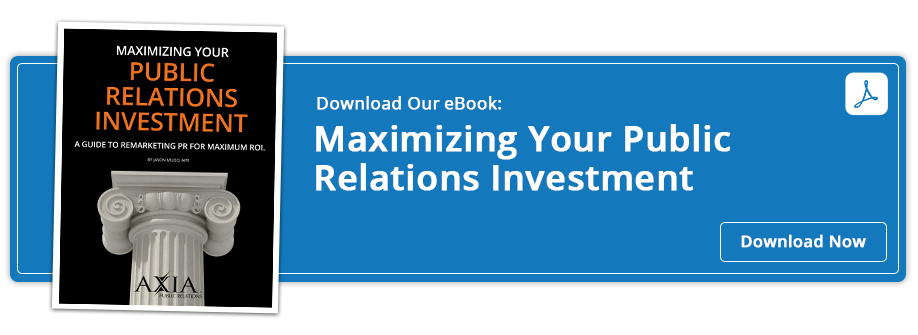Experience, expertise, authoritativeness, and trust will boost your content marketing strategy.
 Producing high-quality online content is a vital yet challenging part of content marketing. To cut through the competition of billions of web pages, use EEAT. The acronym stands for experience, expertise, authoritativeness, and trustworthiness and acts as the set of criteria search engines use to evaluate content quality and usefulness.
Producing high-quality online content is a vital yet challenging part of content marketing. To cut through the competition of billions of web pages, use EEAT. The acronym stands for experience, expertise, authoritativeness, and trustworthiness and acts as the set of criteria search engines use to evaluate content quality and usefulness.
Audio: Listen to this article.
EEAT also refers to elements that influence whether a webpage or piece of content is reliable, factual, and credible by search engines. Search engines use complex algorithms to rank web pages. Optimizing for EEAT is the best way to get your web pages or posts to appear higher in search engine results.
The acronym EAT was originally coined by Google in 2014 as the search engine’s attempt to evaluate the quality of content posted online. In 2020, Google's EAT approach added the second “E” for real-world experience, which supports Google’s preference for personal experience and first-hand knowledge.
Google clearly states through policies that websites should be considering the value of published content for the user — not just for the algorithm.
Why should you care about EEAT?
EEAT is intended to present substantive, unbiased information from reputable sources to internet users. Without considering EEAT, search engines could easily highlight content from uncredible sources that mislead or provide false information. Incorporating expertise, real-world experience, authoritativeness, and trust allows search engines to better filter out low-value content and satisfy users' informational needs.
EEAT also provides search engines with a compass to measure the knowledge and qualifications of published content. In the eyes of the search engine, experience and subject matter expertise generally equate to higher-quality content. For instance, a tutorial on installing a sink from a certified plumber is likely more authoritative than tips from a random individual with no plumbing experience.
EEAT offers guideposts to evaluate whether content is accurate, objective, and bias-free. This prevents misleading, false, or overly promotional content from ranking high on result pages. Content that presents misinformation or distorted conclusions often lacks the balance and integrity that comes from expertise.
Additionally, EEAT enables search engines to reward websites that have built reputations and trust over the long term. Those who continuously publish engaging, fact-based content that resonates with target audiences demonstrate their capabilities. They earn recognition as trusted voices on topics searchers care about.
How can your company optimize for EEAT?
For content creators and site owners, optimizing content across EEAT parameters involves several steps.
Content creators should highlight background, credentials, and qualifications related to their niche either with an author profile or on an “About Us” page. Demonstrating subject matter expertise establishes authority.
Researching thoroughly, adding depth, and producing original, substantive content is important. Content that simply rewords what appears elsewhere tends to rate poorly on EEAT. The same applies to thin content created primarily for ad revenue.
Affiliating with reputable publications or organizations helps demonstrate credibility. Guest posting on authoritative industry blogs or partnering with recognized institutions signals a trusted voice. Having a strong PR strategy in place is a great way to gain guest post and quote opportunities in reputable publications.
Remaining objective and eliminating bias is required. Disclosing any sponsors or advertisers keeps content transparent. Depending on where you live, there are different privacy and disclosure laws that may apply. This upholds reader trust and aligns with EEAT best practices.
For site owners and marketers, EEAT optimization might involve:
- Conducting background research on contributors to gauge their specialty areas and reputation. Higher author EEAT scores typically lift overall site quality.
- Evaluating existing site content across EEAT parameters to identify gaps. This might reveal where contributors lack expertise or content that comes across as biased.
- Adding contributor bios and other indicators of credibility. Profiles conveying subject matter expertise and content focus are helpful.
- Monitoring engagement metrics and user satisfaction levels. Strong dwell time and low bounce rates suggest visitors find value in content.
- Securing links from reputable industry websites. Earned backlinks help demonstrate community trust and raise page authoritativeness.
The Bottom Line
EEAT provides creators, publishers, and search platforms with a blueprint for creating high-quality online content. Optimizing across these core evaluation criteria - embracing expertise, experience, authoritativeness, and trust - promises to reward internet users with substantive, accurate information searchers find valuable. Coupled with a strong PR strategy, EEAT provides the roadmap to content marketing success.
Contact us today to discover how our inbound service leverages content marketing to grow your company.
Photo by Burst
Topics: SEO, owned media, web media


Comment on This Article